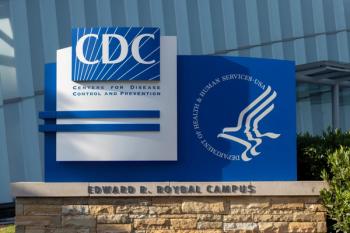
Mucosal EV Adjuvants May Revolutionize Intranasal Flu Vaccines
Key Takeaways
- Mature dendritic cell-derived EVs enhance intranasal influenza vaccines, stimulating mucosal and systemic immunity and providing cross-strain protection in mice.
- EVs activate antigen-presenting cells more effectively than those from immature cells, leading to robust germinal center formation and durable antibody responses.
New research reveals that extracellular vesicles enhance intranasal flu vaccines, boosting mucosal immunity and offering broader protection against diverse strains.
New preclinical research from Georgia State University has identified extracellular vesicles (EVs) derived from mature dendritic cells as powerful adjuvants for intranasal influenza hemagglutinin (HA) vaccines in mice. When combined with HA, these EVs stimulated both mucosal and systematic immunity, granting complete protection against matched and mismatched flu virus strains.1
EVs Activate Multiple Immune Cells
In lab studies, mature dendritic cell-derived EVs (mDC-EVs) activated antigen-presenting cells—including dendritic cells, macrophages, and B cells—far more effectively than EVs from immature cells. Mice immunized intranasally with H3N2-HA plus mDC-EVs showed enhanced early immune activation: airway immune cell recruitment, lymphocyte activation within 24 hours, and robust germinal center formation in lung-draining lymph nodes by day 14. These germinal centers are critical for producing durable, high-quality antibody responses.1
Mice receiving the HA and mDC-EV combination avoided weight loss and illness after exposure to both homogenous (same strain) and heterologous (different strain) influenza viruses. This contrasts with traditional intranasal protein vaccines, which usually do not confer cross-strain protection.1
Mechanism and Advantages Over Traditional Adjuvants
The EVs serve as mucosal adjuvants by delivering major histocompatibility complex-peptide complexes, costimulatory proteins, and other immune-stimulating cargo directly to mucosal tissues. This promotes better antigen presentation and germinal center activation than vaccines without EVs. Unlike standard adjuvants, mDC-EVs act at the mucosal entry point, offering both respiratory tract and systematic immune defense.
EV-based adjuvant platforms are part of a growing trend in vaccine innovation. A 2020 review highlighted EVs’ natural role in intercellular communication and their potential for delivering viral components to the immune system.2 This foundational knowledge helps explain why the new data from Georgia State University show mDC-EVs working so robustly at mucosal surfaces.1
Challenges and Next Steps
Although promising, EV adjuvantation has hurdles because manufacturing at scale and ensuring consistency in EV composition may be complex. Regulatory pathways for EV-based vaccines are still under development, and human clinical trials are needed to confirm safety, immunogenicity, and effectiveness. Nonetheless, this approach could be particularly variable during flu seasons with unpredictable or drifted strains, when traditional vaccines are less effective.3
A Pharmacist’s Pivotal Role
Pharmacists can clarify the benefits of nasal vaccination enhanced with EVs, such as needle-free delivery and broader strain protection. Formulation may require specialized storage and mixing protocols; pharmacists can establish reliable logistics for these novel products. Partnering with clinical teams and public health agencies can aid in deploying EC-adjuvanted vaccines during outbreaks or seasons with high strain variation.1-3
Conclusion
The study findings, published in ACS Nano, illustrate that intranasal vaccines enhanced by mDC-derived EVs can offer full protection against diverse influenza strains in mice. By strengthening both mucosal and systematic immunity, this platform holds the potential to improve future flu vaccine effectiveness. Through patient education, technical oversight, and monitoring, pharmacists are well positioned to support the adoption and successful implementation of this next-generation vaccine strategy.1-3
REFERENCE
1. Dong C, Wei L, Kim JK, et al. Mature dendritic cell–derived extracellular vesicles are potent mucosal adjuvants for influenza hemagglutinin vaccines. ACS Nano. 2025 Jul 1. doi:10.1021/acsnano.5c08831
2. Wang BZ, Frontiers in Cellular and Infection Microbiology. EVs in influenza infection and vaccine development. 2020 https://www.frontiersin.org/journals/cellular-and-infection-microbiology/articles/10.3389/fcimb.2020.00366/full
3. "Novel flu vaccine adjuvant improves protection against influenza viruses, study finds." Georgia State University News. July 1 , 2025. https://news.gsu.edu/2025/07/01/novel-flu-vaccine-adjuvant-improves-protection-against-influenza-viruses-study-finds/
Newsletter
Stay informed on drug updates, treatment guidelines, and pharmacy practice trends—subscribe to Pharmacy Times for weekly clinical insights.




















































































































































































































